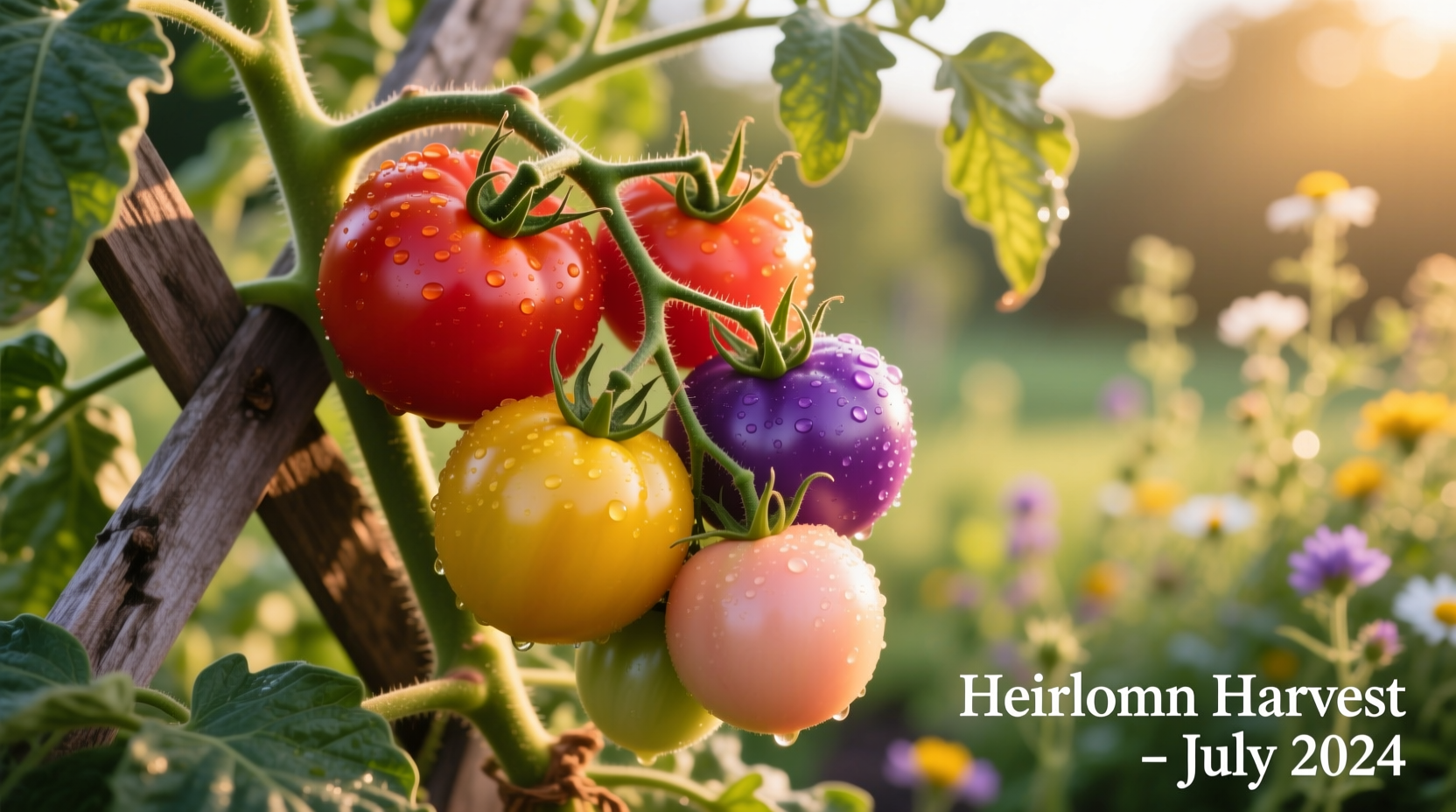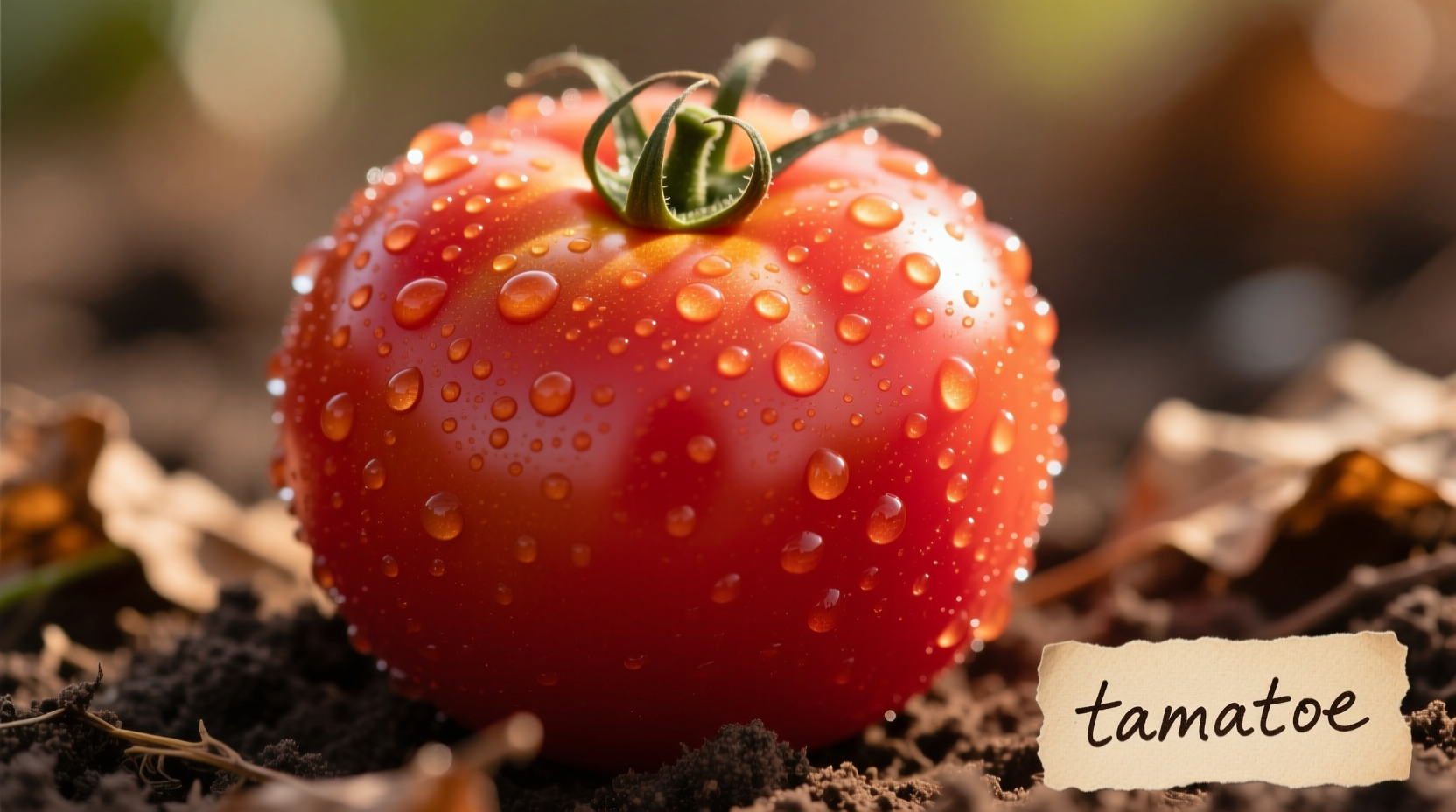If you're searching for "tamatoe tomato," you've likely encountered a common misspelling. The correct term is tomato (Solanum lycopersicum), a nutrient-rich fruit botanically classified as a berry. Tomatoes provide lycopene, vitamin C, and potassium, with scientific studies confirming benefits for heart health and cancer prevention. This guide clarifies the terminology confusion while delivering practical growing, nutritional, and culinary insights based on agricultural science and historical research.
Understanding the "Tamatoe" Confusion: Setting the Record Straight
"Tamatoe" is a frequent misspelling of tomato, likely stemming from phonetic interpretation. The word entered English from the Spanish tomate, which itself derived from the Nahuatl (Aztec) word tomatl. Despite the spelling variation, all references point to the same versatile fruit that's essential in global cuisines.
According to linguistic research from the Merriam-Webster Dictionary, "tomato" has maintained consistent spelling in English since the 16th century, with "tamatoe" appearing only as an occasional error in informal writing.
Tomato Evolution: From Wild Fruit to Global Staple
Tomatoes originated in western South America and were first domesticated by Mesoamerican cultures. Let's examine their remarkable journey:
| Historical Period | Key Developments | Geographic Spread |
|---|---|---|
| 700-500 BCE | Earliest cultivation by Aztecs and Mayans | Mexico and Central America |
| 1521-1550 | Spanish conquistadors introduce tomatoes to Europe | Spain, then Italy and Portugal |
| 18th Century | Overcoming "poisonous" misconception in North America | Eastern United States |
| 19th Century | Commercial cultivation begins in United States | Ohio, New Jersey, and Florida |
| 20th Century | Development of modern hybrid varieties | Global cultivation |
This historical timeline, verified through agricultural archives from the USDA National Agricultural Library, shows how tomatoes transformed from a regional crop to a global dietary staple.
Tomato Varieties: Choosing What's Right for Your Needs
With hundreds of varieties available, understanding tomato types helps you select the best options for your garden or kitchen:
Common Tomato Categories
- Cherry Tomatoes: Small, sweet varieties perfect for snacking (e.g., Sungold, Sweet Million)
- Globe Tomatoes: Standard slicing tomatoes for sandwiches and salads (e.g., Beefsteak, Better Boy)
- Plum/Roma Tomatoes: Meaty with less juice, ideal for sauces (e.g., San Marzano, Amish Paste)
- Heirloom Tomatoes: Open-pollinated varieties with unique colors and flavors (e.g., Brandywine, Cherokee Purple)

Nutritional Powerhouse: Science-Backed Health Benefits
Tomatoes deliver impressive nutritional value. According to USDA FoodData Central, one medium tomato (123g) provides:
- 28% of daily vitamin C needs
- 20% of vitamin K requirements
- 9% of potassium intake
- Significant lycopene content (enhanced when cooked)
Research published in the Journal of Agricultural and Food Chemistry confirms that lycopene absorption increases by 2.5 times when tomatoes are cooked with healthy fats like olive oil. This explains why tomato-based sauces offer greater health benefits than raw consumption for certain nutrients.
Practical Growing Guide: From Seed to Harvest
Whether you're a beginner gardener or experienced grower, these evidence-based tips will help you cultivate successful tomato plants:
Essential Growing Conditions
- Sunlight: Minimum 6-8 hours of direct sun daily
- Soil: Well-draining, slightly acidic (pH 6.2-6.8)
- Watering: Consistent moisture (1-2 inches weekly), avoid wetting leaves
- Spacing: 24-36 inches between plants for proper air circulation
Agricultural extension data from University of Minnesota Extension shows that proper plant spacing reduces disease incidence by up to 40% compared to crowded plantings.
Avoiding Common Growing Mistakes
Many gardeners encounter these preventable issues:
- Blossom End Rot: Caused by calcium deficiency, often due to inconsistent watering
- Cracking: Results from rapid moisture changes after dry periods
- Leaf Spot Diseases: Prevent by watering at soil level and ensuring good air flow
Culinary Applications: Maximizing Flavor and Nutrition
Different preparation methods affect both flavor and nutritional value:
Raw vs. Cooked Tomatoes: When to Use Each
- Raw: Best for vitamin C retention and fresh flavor (salads, sandwiches)
- Cooked: Increases lycopene bioavailability (sauces, soups, roasted dishes)
- Combined Approach: Create layered flavor profiles by using both raw and cooked tomatoes in the same dish
Food science research from the Journal of Food Science demonstrates that cooking tomatoes with olive oil increases lycopene absorption by up to 300% compared to raw consumption.
Storage Solutions: Keeping Tomatoes Fresh Longer
Proper storage maintains both flavor and nutritional value:
- Room Temperature: Store ripe tomatoes stem-side down on counter for up to 5 days
- Refrigeration: Only for fully ripe tomatoes you won't use immediately (reduces flavor complexity)
- Preservation: Freezing, canning, or drying extends shelf life while preserving nutrients
According to post-harvest research from USDA Agricultural Research Service, refrigeration below 55°F damages tomato flavor compounds, explaining why supermarket tomatoes often taste bland.
When Tomatoes Pose Risks: Important Safety Considerations
While tomatoes are generally safe, certain conditions require caution:
- Green Parts: Tomato leaves and stems contain tomatine, which can cause digestive upset in large quantities
- Nightshade Sensitivity: Some individuals with autoimmune conditions may need to limit nightshade vegetables
- Canned Tomatoes: Acidic nature can cause BPA leaching from can linings (opt for BPA-free cans)
These context boundaries, documented by the FDA, help ensure safe consumption while enjoying tomatoes' benefits.
Global Perspectives: How Different Cultures Use Tomatoes
Tomatoes have been incorporated uniquely across world cuisines:
- Mexico: Essential in salsas, often roasted for depth of flavor
- Italy: Foundation of sauces, with regional variations in preparation
- Greece: Key component in salads like horiatiki
- India: Used in curries and chutneys, often combined with spices
A culinary survey conducted by the Food and Agriculture Organization shows tomatoes rank as the third most consumed vegetable globally, following potatoes and onions, with consumption patterns varying significantly by region.











 浙公网安备
33010002000092号
浙公网安备
33010002000092号 浙B2-20120091-4
浙B2-20120091-4